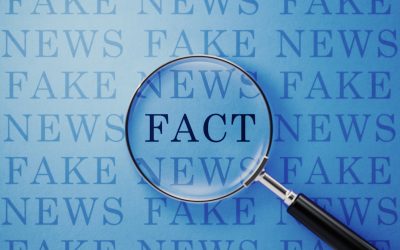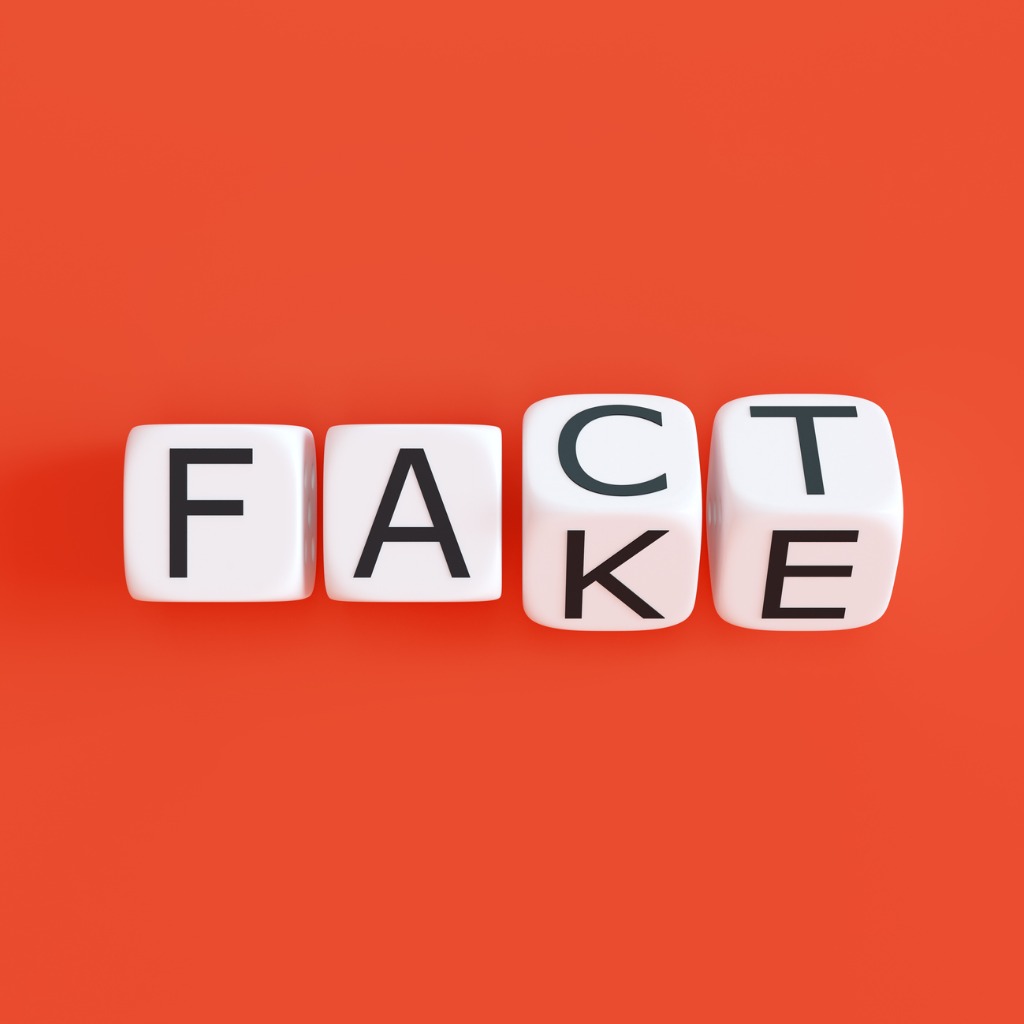The inspiration for this blog is the one-year anniversary of the January 6, 2021 insurrection on the US Capitol when supporters of former US President Donald Trump stormed our Nation’s statehouse as lawmakers were set to sign off on President-elect Joe Biden’s electoral victory in what was supposed to be a routine process headed to Inauguration Day.
To me, that was one of the darkest days in my lifetime. It shook me to my core and made me think, not of political polarization or radicalization, but about the effect of social media and conspiracy theories on our lives. The stories and myths tied to that sickening episode spread on the internet faster than a PBR disappears at a NASCAR race. And, to this day, more than a year later, they continue to do so.
Because I have pledged that my blogsite will not cross over political lines (except for an occasional good-natured, tongue-in-cheek, well-placed barb delivered to both sides of the aisle), we’ll leave it at that. Suffice to say that I shed tears that day.
********************************
It is another idyllic Sunday morning. The air is crisp, the sun is shining in a clear blue sky, and you have just logged on to the internet to catch up with the latest news.
How many of us do the same thing each morning? Back in the day, we used to take the dog for a quick walk, retrieve the newspaper from the lawn or porch, and hunker down to read about the world and our community (and, of course, the local sports teams). These days, we are far more likely to let the pup jump up on the couch and curl up against us as we sit down with the latest tablet and catch up with the day’s or week’s news, compliments of the internet. For many, that’s a scene oft-repeated during one’s day.
The good news (pun intended) is that it’s rare to find something that’s not true on the internet. If it’s on the internet, it must be the truth, right?
Not so much. More and more, the question we should all be asking is whether we are reading fact or fiction?
Unfortunately, in this upside-down contemporary world of ours, distinguishing between gospel and fabrication is too often challenging … and that’s extremely troublesome.
Simply put, offerings presented online make you wonder what we should believe and who we should trust.
As a former journalist who fancies himself a passable and responsible writer, the term “fake news” first caused me to be reflexively dismissive. Back in the day, fake news was the purview of the National Enquirer and its ilk, and my reading of that rag started and stopped with a scan of the “headlines” thereon while in the supermarket checkout line. To this day, there doesn’t exist a National Enquirer or any of its sister publications with my fingerprints on it, and there never will be.
The Evolution of Fake News
There is no argument that fake news has evolved with a purpose beyond pure entertainment.
No longer is the primary focus aliens landing at a secret air force base in Nevada, what (insert celebrity/politician name) is hiding, who has a love child with whom, where there has been another sighting of Loch Ness or Sasquatch, Paul McCartney is dead, or some other bombshell world exclusive.
The question we should be asking is why would “news” evolve — and gain huge followings — that is clearly fabricated, with few (or no) verifiable facts, sources or quotes in our theoretically advanced society? Why would such disinformation be embraced as gospel and passed on to umpteen others? And to countless others after that? And so forth and so on?
The culprit vehicle is, without question, social media, because of the ease with which such stories are shared online. The technological simplicity of copy/paste/click/share has promoted the unrelenting explosion of misinformation and disinformation content.
According to a Pew Research Center survey conducted August 31-September 7, 2020, “more than eight-in-ten US adults (86%) say they get news from a smartphone, computer or tablet ‘often’ or ‘sometimes,’ including 60% who say they do so often. This is higher than the portion who get news from television, though 68% get news from television at least sometimes and 40% do so often. Americans turn to radio and print publications for news far less frequently, with half saying they turn to radio at least sometimes (16% do so often) and about a third (32%) saying the same of print (10% get news from print publications often).”
The culprit intent is that such articles are written to provoke an emotional response. Indeed, such pieces are deliberate in their purpose and are easily and in increasing numbers dropped into (i.e., “seeding”) the (dis)information superhighway to entice readers into sharing them.
The Fourth Estate
Perhaps a couple of definitions, as I see them, are called for at this point. To me, “real” news keeps us informed of the changing events, issues, and people of interest in the world. Though it may be interesting or even entertaining, the principal value of news is as an entity to empower the informed.
The purpose of journalism is thus to provide citizens with the information they need to make the best possible decisions about their lives, communities, societies, and governments. Actual journalists, backed up by experienced editors, take responsibility for the accuracy of their work, confirm information before releasing it, and rely on original sources whenever possible. At their freedom-of-the-press best, journalists use their position and reporting to facilitate greater transparency of those in power, providing a platform for those in society who may not have a voice. Journalists-with-a-capital-J have a special responsibility to be watchdogs, including ensuring the transparency of public records and public business over the government and public affairs.

Today it seems that there is, more often than not, an agenda behind reports that are emanating from “news” sources. These days, the news generated from a growing number of “sources” is simply spaghetti thrown on the wall — often with headlines designed to sensationalize — by reporters, politicians, public relations firms, and agenda-driven causes — with a specific intent and audience in mind. These persons or entities hope their stories stick, snag and/or otherwise fire up their intended audience, ultimately either changing behavior or supporting a specified societal belief or engendering the comportment of a targeted group. The result? Attitudes across society have become more robust due to interacting, sharing and consuming such information on social media and the internet.
Technically, there’s a difference between the mis and the dis. Misinformation is false or inaccurate information that is mistakenly or inadvertently created or spread — its intent is not (usually) to deceive. Disinformation is false information that is deliberately created and distributed “in order to influence public opinion or obscure the truth.”
The problematic issue, at least for me, is that disinformation has become a lifeline to countless individuals despite the fact that it is being created purely to dispense propaganda and give credence to conspiracy theorists or worse.
In recent years, fake news stories and conspiracy theories have proliferated social media, in part because they are so easily and quickly shared online. Too frequently, such stories are pure hype, designed to mislead the reader. Moreover, many are “clickbait” — i.e., written for economic incentives in which the writer profits via the number of people who click on a story.
You Believe What You Believe
The issue with fake internet news is that we are ready to believe almost anything. Why? I suspect for three reasons:
1) when emotion and logic collide, emotion wins every time; 2) when it comes to the internet, society’s patience is sorely lacking; and 3) people are more likely to accept messages, chapter and verse, that confirm their beliefs and dismiss information that does not. If one has an agenda, those are three strong, nearly infallible plays to have in your playbook.
The more outrageous a news item appears, the easier we find it is to believe it, and the faster we click that share button on Facebook, Twitter, or another monster of social media.
So, is Facebook telling us the truth? Most of the time, probably not. I suppose that there has always been a universe of scam artists looking to make a buck off our gullibility, to bend or ignore the truth in order to secure or hold onto non-monetary benefits (e.g., power), and to promote the conspiratorial worst of our society. That being accepted, some of the stories that have made internet rounds are … insane. Amongst scads of examples are:
- The Corona Virus — Does it exist at all? Was it created so that big pharma can make a fortune? Are the vaccines safe?
- Vladimir Putin Is A Robot — Allegedly leaked by the CIA.
- John Lennon’s widow, Yoko Ono, had an affair with Hilary Clinton back in the 1970s — the story was shared more than 935,000 times on Facebook before it went away.
- The US bacon reserve hit an all-time low a few years ago. Who knew there was a reserve of bacon? There was no truth to this story, but that did not stop its momentum. It ended up being shared by millions of Facebook users.
- Pope Francis endorsed Mr. Trump’s election campaign. Pope Francis did nothing of the sort. Apart from the papal conclave, the Vatican has a policy of not engaging in politics. Still, it was one of the most popular pieces of fake news on Facebook, with 960,000 engagements in the three months leading up to the presidential election.
- The birthers’ belief that former US President Barack Obama was born outside the United States and was therefore ineligible to be President under the provisions of the US Constitution. Notwithstanding the fever swamps of online conspiracy sites, our 44th President of the United States was conclusively born in 1961, in Honolulu, Hawaii.
- And, finally, the impetus for this blog … The attack on the US Capitol was based on a “Big Lie” about election fraud in 2020, and the hope of supporters of former President Trump that they could stop the certification of electoral vote results. In the year since, there have been countless disinformation campaigns to recast, downplay and misrepresent the events that unfolded at the Capitol that sad and horrific day.
I could go on and on. Mis- and Disinformation thrives. The backwash of this balderdash isn’t simply no-harm-no-foul. It can also provoke serious consequences, as it did last January at the Capitol.
It’s truly a sad state of affairs. How did we get to the point where we believe what we see on the web — said by whomever — without verification? Where we suspended all disbelief and blindly accept that a set of anonymous Twitter accounts — with not a smidgeon of evidence supporting their claims — are who they claim to be? Why do we embrace fake with open arms rather than be suspicious of it, let alone take the time to debunk unsupported myths? Why do so many of us stop reading after the lead or possibly the second paragraph (or even stop after consumption of the headline) and take what was just absorbed as gospel?
Waaayyy back in the day, I had a journalism professor tell us newspaper wannabe pups, “Don’t go left. Don’t go right. Go deeper.” Journalistic integrity was all-important. As I noted above, the golden days of journalism brought with it specific codes and ethics that responsible reporters followed. Always. Now anyone with a computer can create or share their version of “news.” Thankfully, one set of guardrails are firmly in place — we are, of course, all experts in our own opinions.
What Has Contributed to the Wave of Disinformation?
Several things:
- Anonymity is a blessing and easy to achieve. Folks get brave when they can do so without a face. Dropping an inflammatory opinion or passing on a fabricated con-story is easier than crackin’ an egg. It’s an issue that the web has dealt with since its beginning, and it’s a problem that, at this point, will never, ever go away.
- The internet’s search engines don’t take credibility into account. While SEO searches for strong content by solid writers, well-written pieces are not necessarily accurate reports. In other words, articles that show up on the first page of Google’s web results are just as susceptible to providing erroneous information. And, more often than not, when someone does ask the googles for help, searches usually stop at the top of the list — 75% of searchers never click past the first page of results.
- Psychological research put forward the “illusory truth effect”. This phenomenon outlines how, when we hear the same malarkey repeated again and again, we often come to believe it is true. Disturbingly, this happens even when people should know better — i.e., when individuals, from the get-go, know that the mis/disinformation is false. In other words, repetition leads to belief, and the internet, PR hacks, and some news bureaus are the kings of repetition.
- What about retractions of stories when published articles containing factual errors are later proved false? Touché, but not really. When individuals come to the plate with strong preconceptions, after-the-fact updates (often buried within the publication or webpage) have virtually no effect on beliefs. By the time a correction is issued (which is a rare occurrence on the internet), the story has already done the damage desired, including being passed downstream amongst like-minded individuals.
- Finally, those who parse out conspiracy theories like candy on Halloween know that they are not likely to be retracted. Accounts may even contain a dash of truth, and almost all will feed an emotional need for believers. Even if the latter wasn’t the case, intransigent believers quickly find a path to rationalize away evidence that contradicts their beliefs. Lastly, those who dispute conclusions — including legitimate news agencies and fact-checkers — are deemed mistaken or a part of the conspiracy. That’s a tough nut to crack.
 Fake news is not going away. Indeed, it will almost assuredly continue to proliferate because there’s too much at stake and to gain (read: follow the money and the power) for proprietors of shoddy or questionable accounts to generate otherwise. Its proprietors and users are slicker than dog drool on a doorknob.
Fake news is not going away. Indeed, it will almost assuredly continue to proliferate because there’s too much at stake and to gain (read: follow the money and the power) for proprietors of shoddy or questionable accounts to generate otherwise. Its proprietors and users are slicker than dog drool on a doorknob.
The Best Defense
The fact remains that you … we … consumers themselves … are the best defense against the spread of disinformation. Acknowledging that very few will take the time to “dig deep,” results-driven steps could be taken if the will was there. To wit:
- Consider the Source. — It doesn’t take a genius to see signs that maybe such-and-such a website isn’t a legitimate news organization or generator. When you can’t trust the source, it is always best to err on the side of caution. Ask yourself in whose interest is it to promote the so-called news story? Credible sources do matter, and you should be able to check all sources. If a journalist quotes a source’s name or a scientific fact, it should be verifiable.
- There Is a Story After the Headline. — If an intoxicating headline draws you in, read a bit further before passing along the information, even if “I could believe that” or “Ah-HAH! Gotcha!” is your immediate reaction. Even in legitimate news stories, the headline doesn’t usually tell the whole story.
- Who is the Author? — Another tell-tale sign of a fake story is often the byline. Has the author published anything else? Be suspicious if the byline, which names the author, is a “personality” writing for a little-known site or if the author’s contact information is a g-mail address.
- Check the Domain. — Be wary of unusual domain names such as “.com.co.” A second-level domain like “abcnews” may appear credible, but note that abcnews.com.co is a different and illegitimate site, though designed to appear similar to the original.
- What’s the Support? — Bogus stories often cite official — or official-sounding — sources, but once you look into it, the source doesn’t back up the claims being made.
- Pay Attention to Quality. — Trust me on this one — typos, emotional punctuation?!?!?, and instances of ALL CAPS usage are not going to be found in reputable publications. Skilled, experienced writers and editors set the bar for proofreading and proper use of grammar extremely high.
- Who is (or is not) Quoted? — If you notice a conspicuous lack of quotes and contributing sources, particularly on a complex issue, then something is awry. Credible journalism is all about fact-gathering, so a lack of research likely means a lack of fact-based information.
- Current Counts. — Is the story current or recycled? Make sure an older account or quote isn’t being taken out of context. Grabbing (and twisting) a story from back in the day to support a current position happens more often than you’d think.
- Tongue-In-Cheek? — Remember, there is such thing as satire. Well-written cheeky, irreverent lampoonery is fun and has a special place in the halls of journalism. Still, you’d be surprised at how many such pieces get quoted as current and reliable sources for disinformation.
- Left Brain. — Just because a site is popular amongst your circle does not mean its content is accurate. Step back and be more logical, analytical, and objective. Try this … Look at what other obviously outlandish stories have been posted to the “news” website that is the source of the story that fired you up.
-

Perhaps this heading is unintentionally ironic?
Consider Your Own Biases. — This is probably the #1 conundrum simply because validation bias leads people to put more stock in information that confirms their beliefs and to discount information that doesn’t. If you’re agitated to the point of being beside yourself because of a read about someone with whom you take issue, take a breath, step back and make the effort to dig deeper about the “facts” presented. Moreover, if the story makes you feel emotional, you should also stop and think for a moment. Real news stories are written matter-of-factly. An emotional account that has you all fired up is much more likely to be fake news. Could it be that someone is trying to influence your opinion? Count on it.
- And Lastly, Consult the Experts. — There are legitimate sites that check facts and debunk the hooey. Check out the sites below. It’s likely at least one has already fact-checked the latest viral claim to pop up in your news feed.
FactCheck.org
Snopes.com
The Washington Post Fact Checker
International Fact-Checking Network (IFCN)
PolitiFact.com
What Is The Future Of Fake News?
It is difficult to predict the future of fake news or, for that matter, real news.
 Despite pledges by the titans of the internet to patrol content and protect their readers by banning overt repeat offenders and hurtful and even dangerous blather, preventing people from seeing fake stories is impossible. And, truth be told, “preventing” shouldn’t be the goal, either. The fact of the matter is that folks have the right to go where they want to go and to share unreliable articles that affirm their beliefs. That’s one of the many reasons this country is the greatest in the history of the world. Not perfect, but the greatest, bar none.
Despite pledges by the titans of the internet to patrol content and protect their readers by banning overt repeat offenders and hurtful and even dangerous blather, preventing people from seeing fake stories is impossible. And, truth be told, “preventing” shouldn’t be the goal, either. The fact of the matter is that folks have the right to go where they want to go and to share unreliable articles that affirm their beliefs. That’s one of the many reasons this country is the greatest in the history of the world. Not perfect, but the greatest, bar none.
That freedom doesn’t make the proliferation of bunk any less dangerous to our other liberties.
We can only pray that disinformation is checked to the point where it doesn’t fully tear at the fabric of our Nation and that the truth — always the truth — ultimately cannot be hidden and therefore always rules the day and the majority.


